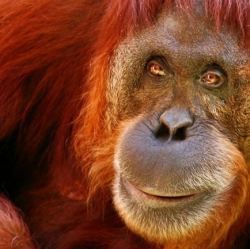
Researchers have reported on improved orangutan and chimpanzee genomes that were built from scratch using long-read PacBio sequencing and long-range mapping technology. The highly contiguous, newly assembled genomes present a better resource for novel gene discovery and high-resolution comparative genomics.
The findings were published in the journal Science.
The project, involved more than 40 scientists at a dozen research centers, was led by Zev N. Kronenberg and Evan Eichler, a Howard Hughes Medical Institute investigator in the Department of Genome Sciences at the University of Washington School of Medicine. Kronenberg is now a senior computational biologist at Phase Genomics.
When their genomes were first compared, many of the genetic differences between humans and other apes were not recognized.
This made them difficult to compare and limited the discovery of the functional differences that distinguish humans from other apes.
By coupling long-read sequence assembly with a hybrid genome scaffolding approach, the researchers have now resolved the majority of gaps in the ape genomes. Some of these gaps contained genes, which are now correctly annotated in the new genomes.
The study authors complemented this effort by sequencing more than 500,000 full-length genes from each species. This has helped to provide a much better understanding of the underlying gene structures.
This is now the most comprehensive catalog of genetic variants that were gained or lost on different ape lineages. Some of these variants affect how genes are differentially expressed among humans and apes.
The researchers also examined the possible influence of some of the genetic variants and gene function regulators on such areas as human and ape dietary differences, anatomy, and brain formation.
The team’s comparative analysis of human and great ape genomes also included a gorilla assembly, a new assembly of an African human genome, and a human haploid hydatidform mole assembly.
Importantly, all the genomes were sequenced and assembled using the same process.
The teams also studied brain organoids – laboratory-generated tissues grown from stem cells of apes or humans and forming a simplified version of organ parts.
These mini-brains were examined to try to understand how differences in gene expression during brain development in humans and chimps might account for chimps’ smaller brain volume, which is three times less than human brain volume. There are also significant dissimilarities in cortical structures in human and chimpanzee brains.
The researchers observed in the organoids that certain genes, particularly those in cells that are like the progenitors of radial glial neurons, are down-regulated in humans compared to chimps. Those genes are more likely to have lost segments of DNA specifically in the human branch important in regulating their expression.
The researchers said that their recent findings fit with their previous studies showing that the genomes of the common ancestral lineage for African great apes likely underwent an expansion of segmental duplication more than 10 million years ago. These repeats of sections of the genetic code may have made great ape genomes particularly prone to deletion and duplication events, thereby accelerating the rate of mutations with major consequences that helped drive the evolution of ape species.
The researchers predict that more advanced, long-range sequencing and mapping technologies, and even longer-read sequencing, will assist in increasing knowledge on the evolutionary journey taken by the great apes and our human ancestors.
They caution that the ape genomes and their work on them are not yet complete because the genome assemblies are still missing other larger, more complex structural variations that cannot yet be assembled.
“Our goal,” said Eichler,” is to generate multiple ape genomes with as high quality as the human genome. Only then will we be able to truly understand the genetic differences that make us uniquely human.”
